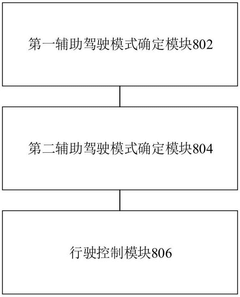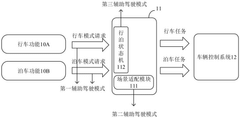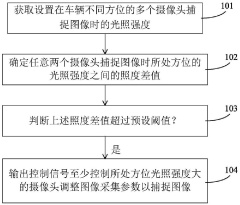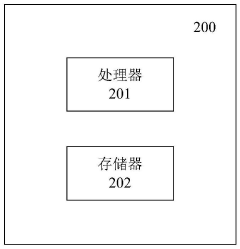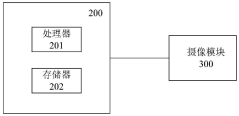L92 engine’s role in advanced driving assistance systems (ADAS)
AUG 14, 20259 MIN READ
Generate Your Research Report Instantly with AI Agent
Patsnap Eureka helps you evaluate technical feasibility & market potential.
L92 Engine in ADAS: Background and Objectives
The L92 engine has emerged as a pivotal component in the evolution of Advanced Driver Assistance Systems (ADAS), marking a significant milestone in automotive technology. This innovative engine design represents a convergence of mechanical engineering and digital intelligence, addressing the growing demand for safer, more efficient, and autonomous-capable vehicles.
The development of the L92 engine can be traced back to the early 2000s when automotive manufacturers began to recognize the potential of integrating advanced computing capabilities with traditional powertrain systems. As ADAS technologies started to gain traction, the need for a more sophisticated engine that could support these complex systems became apparent.
The primary objective of incorporating the L92 engine into ADAS is to enhance vehicle performance while simultaneously providing the necessary power and control for advanced safety features. This engine is designed to work in harmony with various sensors, cameras, and radar systems that form the backbone of ADAS, enabling real-time data processing and rapid response to changing driving conditions.
One of the key technological trends driving the L92 engine's evolution is the increasing electrification of vehicles. The engine has been engineered to seamlessly integrate with hybrid and electric powertrains, allowing for more efficient energy management and reduced emissions. This adaptability positions the L92 as a bridge between conventional internal combustion engines and the future of fully electric propulsion systems.
The L92 engine's role in ADAS extends beyond mere power generation. It serves as a central hub for data collection and analysis, utilizing advanced sensors to monitor engine performance, fuel efficiency, and emissions in real-time. This data is crucial for ADAS functions such as adaptive cruise control, lane-keeping assistance, and predictive maintenance.
Looking ahead, the L92 engine is expected to play an increasingly important role in the development of autonomous vehicles. Its ability to provide precise control over vehicle dynamics, coupled with its integration with ADAS technologies, makes it an ideal platform for testing and implementing self-driving capabilities.
As the automotive industry continues to push towards higher levels of automation, the L92 engine is anticipated to evolve further, incorporating more advanced materials, improved combustion technologies, and enhanced connectivity features. These advancements will not only improve the engine's performance but also its ability to support increasingly sophisticated ADAS functionalities.
The development of the L92 engine can be traced back to the early 2000s when automotive manufacturers began to recognize the potential of integrating advanced computing capabilities with traditional powertrain systems. As ADAS technologies started to gain traction, the need for a more sophisticated engine that could support these complex systems became apparent.
The primary objective of incorporating the L92 engine into ADAS is to enhance vehicle performance while simultaneously providing the necessary power and control for advanced safety features. This engine is designed to work in harmony with various sensors, cameras, and radar systems that form the backbone of ADAS, enabling real-time data processing and rapid response to changing driving conditions.
One of the key technological trends driving the L92 engine's evolution is the increasing electrification of vehicles. The engine has been engineered to seamlessly integrate with hybrid and electric powertrains, allowing for more efficient energy management and reduced emissions. This adaptability positions the L92 as a bridge between conventional internal combustion engines and the future of fully electric propulsion systems.
The L92 engine's role in ADAS extends beyond mere power generation. It serves as a central hub for data collection and analysis, utilizing advanced sensors to monitor engine performance, fuel efficiency, and emissions in real-time. This data is crucial for ADAS functions such as adaptive cruise control, lane-keeping assistance, and predictive maintenance.
Looking ahead, the L92 engine is expected to play an increasingly important role in the development of autonomous vehicles. Its ability to provide precise control over vehicle dynamics, coupled with its integration with ADAS technologies, makes it an ideal platform for testing and implementing self-driving capabilities.
As the automotive industry continues to push towards higher levels of automation, the L92 engine is anticipated to evolve further, incorporating more advanced materials, improved combustion technologies, and enhanced connectivity features. These advancements will not only improve the engine's performance but also its ability to support increasingly sophisticated ADAS functionalities.
ADAS Market Demand Analysis
The Advanced Driver Assistance Systems (ADAS) market has experienced significant growth in recent years, driven by increasing consumer demand for safer and more intelligent vehicles. The integration of L92 engines in ADAS has further accelerated this market expansion, offering enhanced performance and efficiency in advanced driving functionalities.
Market research indicates a robust growth trajectory for ADAS, with the global market expected to reach substantial valuations in the coming years. This growth is primarily fueled by the rising awareness of vehicle safety among consumers, stringent government regulations regarding road safety, and the automotive industry's push towards autonomous driving technologies.
The demand for ADAS features incorporating L92 engines is particularly strong in premium and luxury vehicle segments, where consumers are willing to pay a premium for advanced safety and convenience features. However, there is a growing trend of ADAS technologies trickling down to mid-range and entry-level vehicles, expanding the potential market size.
Key ADAS features driving market demand include adaptive cruise control, lane departure warning systems, automatic emergency braking, and parking assistance. The L92 engine's role in these systems is crucial, providing the necessary power and precision for real-time data processing and rapid response to changing driving conditions.
Geographically, North America and Europe lead in ADAS adoption, with Asia-Pacific showing the fastest growth rate. This regional variation is attributed to differences in regulatory environments, consumer preferences, and technological infrastructure.
The commercial vehicle sector is emerging as a significant market for ADAS technologies, driven by the need for improved fleet safety and operational efficiency. L92 engine-equipped ADAS systems in trucks and buses are increasingly sought after by logistics companies and public transportation operators.
Despite the positive market outlook, challenges remain. The high cost of advanced ADAS technologies, including those utilizing L92 engines, remains a barrier to widespread adoption in lower-priced vehicle segments. Additionally, consumer education and trust in these systems are ongoing concerns that the industry must address to fully realize market potential.
Looking ahead, the ADAS market is poised for continued growth, with L92 engine integration playing a pivotal role in enhancing system capabilities. As autonomous driving technologies advance, the demand for more sophisticated ADAS features is expected to surge, further expanding market opportunities for L92 engine-based solutions in the automotive industry.
Market research indicates a robust growth trajectory for ADAS, with the global market expected to reach substantial valuations in the coming years. This growth is primarily fueled by the rising awareness of vehicle safety among consumers, stringent government regulations regarding road safety, and the automotive industry's push towards autonomous driving technologies.
The demand for ADAS features incorporating L92 engines is particularly strong in premium and luxury vehicle segments, where consumers are willing to pay a premium for advanced safety and convenience features. However, there is a growing trend of ADAS technologies trickling down to mid-range and entry-level vehicles, expanding the potential market size.
Key ADAS features driving market demand include adaptive cruise control, lane departure warning systems, automatic emergency braking, and parking assistance. The L92 engine's role in these systems is crucial, providing the necessary power and precision for real-time data processing and rapid response to changing driving conditions.
Geographically, North America and Europe lead in ADAS adoption, with Asia-Pacific showing the fastest growth rate. This regional variation is attributed to differences in regulatory environments, consumer preferences, and technological infrastructure.
The commercial vehicle sector is emerging as a significant market for ADAS technologies, driven by the need for improved fleet safety and operational efficiency. L92 engine-equipped ADAS systems in trucks and buses are increasingly sought after by logistics companies and public transportation operators.
Despite the positive market outlook, challenges remain. The high cost of advanced ADAS technologies, including those utilizing L92 engines, remains a barrier to widespread adoption in lower-priced vehicle segments. Additionally, consumer education and trust in these systems are ongoing concerns that the industry must address to fully realize market potential.
Looking ahead, the ADAS market is poised for continued growth, with L92 engine integration playing a pivotal role in enhancing system capabilities. As autonomous driving technologies advance, the demand for more sophisticated ADAS features is expected to surge, further expanding market opportunities for L92 engine-based solutions in the automotive industry.
L92 Engine: Current State and Challenges in ADAS
The L92 engine plays a crucial role in advanced driving assistance systems (ADAS), representing a significant advancement in automotive technology. Currently, the L92 engine is widely integrated into various ADAS applications, enhancing vehicle safety, efficiency, and overall performance. Its advanced features, including direct fuel injection, variable valve timing, and cylinder deactivation, contribute to improved fuel economy and reduced emissions while maintaining high power output.
In the context of ADAS, the L92 engine's precise control and responsiveness are essential for features such as adaptive cruise control, lane-keeping assistance, and automatic emergency braking. The engine's ability to quickly adjust power output and torque delivery enables smooth and accurate vehicle control in various driving scenarios. This seamless integration with ADAS components allows for more effective implementation of safety features and driver assistance technologies.
However, the L92 engine faces several challenges in the rapidly evolving ADAS landscape. One primary concern is the need for even greater precision and real-time responsiveness to support increasingly sophisticated ADAS functions. As autonomous driving technologies advance, the engine must be capable of instantaneous adjustments to accommodate complex driving algorithms and decision-making processes.
Another significant challenge is the integration of the L92 engine with emerging electric and hybrid powertrain systems. As the automotive industry shifts towards electrification, the role of traditional internal combustion engines like the L92 is evolving. Adapting the engine to work efficiently in hybrid configurations while maintaining its ADAS capabilities presents a complex engineering task.
Furthermore, the L92 engine must continue to meet increasingly stringent emissions regulations while supporting ADAS functionalities. This requires ongoing refinement of combustion processes and exhaust aftertreatment systems without compromising the engine's performance characteristics that are crucial for ADAS operations.
Lastly, the L92 engine faces challenges in terms of data integration and communication with other ADAS components. As vehicles become more connected and reliant on complex sensor networks, the engine management system must be capable of seamless interaction with a wide array of sensors, controllers, and actuators. This necessitates advancements in engine control units (ECUs) and communication protocols to ensure optimal coordination between the engine and other ADAS subsystems.
In the context of ADAS, the L92 engine's precise control and responsiveness are essential for features such as adaptive cruise control, lane-keeping assistance, and automatic emergency braking. The engine's ability to quickly adjust power output and torque delivery enables smooth and accurate vehicle control in various driving scenarios. This seamless integration with ADAS components allows for more effective implementation of safety features and driver assistance technologies.
However, the L92 engine faces several challenges in the rapidly evolving ADAS landscape. One primary concern is the need for even greater precision and real-time responsiveness to support increasingly sophisticated ADAS functions. As autonomous driving technologies advance, the engine must be capable of instantaneous adjustments to accommodate complex driving algorithms and decision-making processes.
Another significant challenge is the integration of the L92 engine with emerging electric and hybrid powertrain systems. As the automotive industry shifts towards electrification, the role of traditional internal combustion engines like the L92 is evolving. Adapting the engine to work efficiently in hybrid configurations while maintaining its ADAS capabilities presents a complex engineering task.
Furthermore, the L92 engine must continue to meet increasingly stringent emissions regulations while supporting ADAS functionalities. This requires ongoing refinement of combustion processes and exhaust aftertreatment systems without compromising the engine's performance characteristics that are crucial for ADAS operations.
Lastly, the L92 engine faces challenges in terms of data integration and communication with other ADAS components. As vehicles become more connected and reliant on complex sensor networks, the engine management system must be capable of seamless interaction with a wide array of sensors, controllers, and actuators. This necessitates advancements in engine control units (ECUs) and communication protocols to ensure optimal coordination between the engine and other ADAS subsystems.
Current L92 Engine Solutions for ADAS
01 Engine design and configuration
The L92 engine is a V8 engine design with specific configurations for improved performance and efficiency. It features advanced technologies such as variable valve timing and direct fuel injection. The engine's design focuses on optimizing power output, fuel economy, and emissions control.- Engine design and configuration: The L92 engine is a V8 engine design with specific configurations for improved performance and efficiency. It features advanced technologies such as variable valve timing and direct fuel injection. The engine's design focuses on optimizing power output, fuel economy, and emissions control.
- Fuel injection system: The L92 engine incorporates a sophisticated fuel injection system, likely including direct injection technology. This system is designed to precisely control fuel delivery, improving combustion efficiency and engine performance. The fuel injection components are optimized for the engine's specific requirements.
- Valve train and timing mechanism: A key feature of the L92 engine is its valve train system, which may include variable valve timing technology. This system allows for dynamic adjustment of valve timing to optimize engine performance across different operating conditions. The valve train components are designed for durability and efficient operation.
- Engine control and management systems: The L92 engine utilizes advanced engine control and management systems to optimize performance, fuel efficiency, and emissions. These systems may include electronic control units (ECUs) that monitor and adjust various engine parameters in real-time based on operating conditions and driver input.
- Emissions control technologies: To meet stringent emissions regulations, the L92 engine incorporates various emissions control technologies. These may include exhaust gas recirculation (EGR) systems, catalytic converters, and other aftertreatment devices designed to reduce harmful emissions while maintaining engine performance.
02 Fuel injection system
The L92 engine incorporates a sophisticated fuel injection system, likely including direct injection technology. This system is designed to improve fuel atomization, combustion efficiency, and overall engine performance. It may also contribute to reduced emissions and better fuel economy.Expand Specific Solutions03 Valve train and timing mechanisms
Advanced valve train components and timing mechanisms are utilized in the L92 engine. This may include variable valve timing systems, which allow for optimized engine performance across different operating conditions. The valve train design contributes to improved power output, efficiency, and emissions control.Expand Specific Solutions04 Engine control and management systems
The L92 engine likely employs sophisticated engine control and management systems. These systems may include electronic control units (ECUs) that monitor and adjust various engine parameters in real-time. Advanced sensors and algorithms are used to optimize engine performance, fuel efficiency, and emissions control across different operating conditions.Expand Specific Solutions05 Engine block and cylinder head design
The L92 engine features a specific engine block and cylinder head design optimized for performance and efficiency. This may include considerations for weight reduction, improved cooling, and enhanced structural integrity. The design likely incorporates advanced materials and manufacturing techniques to achieve desired performance characteristics.Expand Specific Solutions
Key Players in L92 Engine and ADAS Industry
The L92 engine's role in advanced driving assistance systems (ADAS) is part of a rapidly evolving and competitive landscape. The ADAS market is in a growth phase, with increasing adoption across various vehicle segments. Major players like Robert Bosch GmbH, Hyundai Mobis, and Ford Global Technologies are investing heavily in ADAS technologies, including engine management systems. The market size is expanding, driven by safety regulations and consumer demand for smart vehicles. Technologically, ADAS is advancing quickly, with companies like AVL List GmbH and Zhejiang Geely Holding Group pushing the boundaries of engine integration with autonomous driving features. The L92 engine's application in ADAS represents a convergence of traditional powertrain technology with cutting-edge driver assistance capabilities.
Robert Bosch GmbH
Technical Solution: Bosch has developed advanced L92 engine control systems integrated with ADAS functionalities. Their solution incorporates intelligent engine management that adapts to driving conditions and ADAS inputs. The system uses predictive algorithms to optimize engine performance based on upcoming road conditions and traffic patterns detected by ADAS sensors[1]. This integration allows for smoother transitions between different driving modes, such as eco, sport, and autonomous driving. Bosch's L92 engine control module communicates with other ADAS components like adaptive cruise control and lane keeping assist to provide a more cohesive and efficient driving experience[3]. The system also includes advanced diagnostics and over-the-air update capabilities to ensure optimal performance and compatibility with evolving ADAS technologies[5].
Strengths: Seamless integration with ADAS, predictive optimization, and adaptability to various driving modes. Weaknesses: Potential complexity in implementation and higher cost compared to traditional engine control systems.
GM Global Technology Operations LLC
Technical Solution: GM has integrated L92 engine technology with their Super Cruise ADAS platform. The system utilizes the L92 engine's variable valve timing and direct injection capabilities to enhance fuel efficiency and performance in conjunction with ADAS features[2]. GM's approach focuses on optimizing engine output based on real-time ADAS data, such as upcoming terrain changes or traffic conditions. The L92 engine control module interfaces with the Super Cruise system to adjust power delivery and fuel consumption dynamically. This integration extends to features like adaptive cruise control, where the engine's performance is fine-tuned to maintain optimal speeds and distances[4]. GM has also implemented a machine learning algorithm that continuously improves the engine's response to ADAS inputs over time, enhancing overall system efficiency and driver experience[6].
Strengths: Tight integration with Super Cruise ADAS, continuous improvement through machine learning, and optimized fuel efficiency. Weaknesses: System complexity may lead to higher maintenance costs and potential reliability issues in the long term.
Core L92 Engine Innovations for ADAS
Safety control method and device applied to driving assistance system, equipment and medium
PatentActiveCN119953389A
Innovation
- When any auxiliary driving function of the vehicle is activated, the first auxiliary driving mode corresponding to the function is determined, and the driving environment data of the current driving environment is acquired, and the second auxiliary driving mode matching the environment is determined. Then, it is verified whether the first assisted driving mode and the second assisted driving mode belong to the same assisted driving mode. If it matches, the vehicle's driving control is performed based on the assisted driving task output by the driving decision layer.
Control method and device of vehicle-mounted camera and vehicle-mounted image capturing system
PatentActiveCN111756987A
Innovation
- By obtaining the illumination intensity when multiple cameras capture images, the illumination difference is calculated. If it exceeds the preset threshold, the image acquisition parameters of the camera with higher illumination intensity are adjusted to balance the exposure and ensure that the camera captures clear images.
Regulatory Framework for ADAS Technologies
The regulatory framework for Advanced Driver Assistance Systems (ADAS) technologies, including those involving the L92 engine, is a complex and evolving landscape. Governments and regulatory bodies worldwide are working to establish guidelines and standards to ensure the safe development and deployment of ADAS technologies.
In the United States, the National Highway Traffic Safety Administration (NHTSA) plays a crucial role in regulating ADAS technologies. The agency has developed a framework for automated driving systems, which includes guidelines for testing and deploying ADAS features. These guidelines emphasize the importance of safety, cybersecurity, and human-machine interface design.
The European Union has also been proactive in developing regulations for ADAS technologies. The EU's General Safety Regulation (GSR) mandates the inclusion of certain ADAS features in new vehicles, such as advanced emergency braking systems and lane-keeping assistance. These regulations aim to improve road safety and reduce accidents across member states.
In Asia, countries like Japan and South Korea have implemented their own regulatory frameworks for ADAS technologies. The Japanese government has established guidelines for autonomous driving systems, while South Korea has introduced a certification system for automated vehicles.
One of the key challenges in regulating ADAS technologies is the rapid pace of technological advancement. Regulatory bodies must strike a balance between fostering innovation and ensuring public safety. To address this, many countries have adopted a flexible approach, allowing for the testing and deployment of new ADAS features under controlled conditions.
The regulatory framework also addresses the issue of liability in case of accidents involving ADAS-equipped vehicles. This includes determining responsibility between the driver, vehicle manufacturer, and technology provider. Some jurisdictions have introduced specific legislation to clarify liability issues related to automated driving systems.
Data privacy and cybersecurity are other critical aspects of ADAS regulation. As these systems collect and process large amounts of data, regulators are implementing measures to protect user privacy and prevent unauthorized access to vehicle systems.
Standardization efforts are underway to ensure interoperability and consistency across different ADAS technologies. Organizations such as the International Organization for Standardization (ISO) and SAE International are developing standards for ADAS features, including those related to the L92 engine's role in these systems.
As ADAS technologies continue to evolve, regulatory frameworks will need to adapt accordingly. This may involve the development of new testing methodologies, performance metrics, and safety standards specific to advanced driver assistance systems. The ongoing collaboration between regulators, industry stakeholders, and research institutions will be crucial in shaping the future of ADAS regulation.
In the United States, the National Highway Traffic Safety Administration (NHTSA) plays a crucial role in regulating ADAS technologies. The agency has developed a framework for automated driving systems, which includes guidelines for testing and deploying ADAS features. These guidelines emphasize the importance of safety, cybersecurity, and human-machine interface design.
The European Union has also been proactive in developing regulations for ADAS technologies. The EU's General Safety Regulation (GSR) mandates the inclusion of certain ADAS features in new vehicles, such as advanced emergency braking systems and lane-keeping assistance. These regulations aim to improve road safety and reduce accidents across member states.
In Asia, countries like Japan and South Korea have implemented their own regulatory frameworks for ADAS technologies. The Japanese government has established guidelines for autonomous driving systems, while South Korea has introduced a certification system for automated vehicles.
One of the key challenges in regulating ADAS technologies is the rapid pace of technological advancement. Regulatory bodies must strike a balance between fostering innovation and ensuring public safety. To address this, many countries have adopted a flexible approach, allowing for the testing and deployment of new ADAS features under controlled conditions.
The regulatory framework also addresses the issue of liability in case of accidents involving ADAS-equipped vehicles. This includes determining responsibility between the driver, vehicle manufacturer, and technology provider. Some jurisdictions have introduced specific legislation to clarify liability issues related to automated driving systems.
Data privacy and cybersecurity are other critical aspects of ADAS regulation. As these systems collect and process large amounts of data, regulators are implementing measures to protect user privacy and prevent unauthorized access to vehicle systems.
Standardization efforts are underway to ensure interoperability and consistency across different ADAS technologies. Organizations such as the International Organization for Standardization (ISO) and SAE International are developing standards for ADAS features, including those related to the L92 engine's role in these systems.
As ADAS technologies continue to evolve, regulatory frameworks will need to adapt accordingly. This may involve the development of new testing methodologies, performance metrics, and safety standards specific to advanced driver assistance systems. The ongoing collaboration between regulators, industry stakeholders, and research institutions will be crucial in shaping the future of ADAS regulation.
Environmental Impact of L92 Engine in ADAS
The environmental impact of the L92 engine in Advanced Driver Assistance Systems (ADAS) is a crucial consideration as automotive technology continues to evolve. The L92 engine, known for its high performance and efficiency, plays a significant role in powering vehicles equipped with ADAS features. However, its environmental footprint must be carefully evaluated.
One of the primary environmental concerns associated with the L92 engine in ADAS applications is fuel consumption. While the engine is designed for optimal performance, the additional power requirements of ADAS systems can potentially increase fuel usage. This increased consumption may lead to higher carbon dioxide emissions, contributing to the overall greenhouse gas effect.
Nevertheless, the L92 engine's integration with ADAS technologies can also yield positive environmental outcomes. The engine's advanced fuel management systems, when coupled with ADAS features like adaptive cruise control and predictive route planning, can optimize fuel efficiency. This synergy between engine performance and intelligent driving assistance has the potential to reduce overall emissions in real-world driving conditions.
The manufacturing process of L92 engines for ADAS-equipped vehicles also warrants environmental scrutiny. The production of these sophisticated engines may require more energy-intensive processes and specialized materials, potentially increasing the carbon footprint of vehicle manufacturing. However, advancements in sustainable manufacturing practices and the use of recycled materials in engine components can help mitigate these impacts.
Another environmental consideration is the lifecycle impact of L92 engines in ADAS-equipped vehicles. While these engines are built for durability, the rapid pace of technological advancement in ADAS may lead to more frequent vehicle upgrades. This could result in increased waste generation if proper recycling and disposal methods are not implemented for outdated vehicles and their components.
The L92 engine's role in ADAS also extends to its impact on traffic flow and congestion. By enabling more efficient driving patterns through features like traffic sign recognition and lane keeping assistance, vehicles equipped with this engine and ADAS can potentially reduce overall traffic congestion. This, in turn, can lead to decreased idling times and lower emissions across the broader transportation network.
Furthermore, the noise pollution aspect of the L92 engine in ADAS applications should not be overlooked. While the engine itself is designed for smooth operation, the additional weight of ADAS components may require more frequent acceleration, potentially increasing noise levels in urban environments. However, advancements in engine sound insulation and the trend towards electric powertrains in ADAS-equipped vehicles may help address this concern in future iterations.
One of the primary environmental concerns associated with the L92 engine in ADAS applications is fuel consumption. While the engine is designed for optimal performance, the additional power requirements of ADAS systems can potentially increase fuel usage. This increased consumption may lead to higher carbon dioxide emissions, contributing to the overall greenhouse gas effect.
Nevertheless, the L92 engine's integration with ADAS technologies can also yield positive environmental outcomes. The engine's advanced fuel management systems, when coupled with ADAS features like adaptive cruise control and predictive route planning, can optimize fuel efficiency. This synergy between engine performance and intelligent driving assistance has the potential to reduce overall emissions in real-world driving conditions.
The manufacturing process of L92 engines for ADAS-equipped vehicles also warrants environmental scrutiny. The production of these sophisticated engines may require more energy-intensive processes and specialized materials, potentially increasing the carbon footprint of vehicle manufacturing. However, advancements in sustainable manufacturing practices and the use of recycled materials in engine components can help mitigate these impacts.
Another environmental consideration is the lifecycle impact of L92 engines in ADAS-equipped vehicles. While these engines are built for durability, the rapid pace of technological advancement in ADAS may lead to more frequent vehicle upgrades. This could result in increased waste generation if proper recycling and disposal methods are not implemented for outdated vehicles and their components.
The L92 engine's role in ADAS also extends to its impact on traffic flow and congestion. By enabling more efficient driving patterns through features like traffic sign recognition and lane keeping assistance, vehicles equipped with this engine and ADAS can potentially reduce overall traffic congestion. This, in turn, can lead to decreased idling times and lower emissions across the broader transportation network.
Furthermore, the noise pollution aspect of the L92 engine in ADAS applications should not be overlooked. While the engine itself is designed for smooth operation, the additional weight of ADAS components may require more frequent acceleration, potentially increasing noise levels in urban environments. However, advancements in engine sound insulation and the trend towards electric powertrains in ADAS-equipped vehicles may help address this concern in future iterations.
Unlock deeper insights with Patsnap Eureka Quick Research — get a full tech report to explore trends and direct your research. Try now!
Generate Your Research Report Instantly with AI Agent
Supercharge your innovation with Patsnap Eureka AI Agent Platform!
